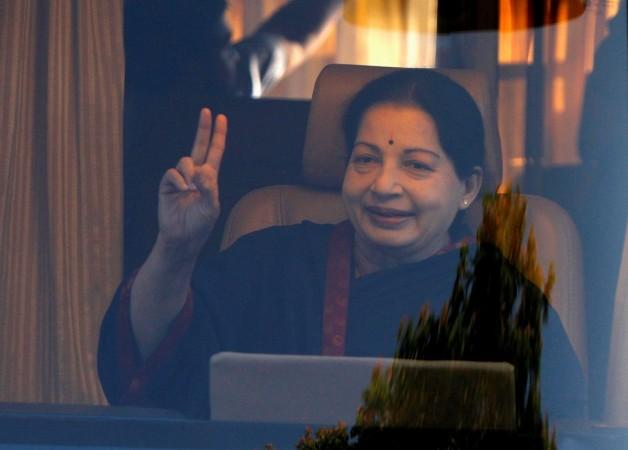
In two of the most maligned professions for women in the world, she held her own. And held her head high. Jayalalithaa Jayaram ruled hearts when she was a Tamil actress. And won more hearts when she ruled Tamil Nadu.
Amma to millions of her followers, Jayalalithaa left this world as she lived in it — constantly being in news. For the 10 weeks that she remained in hospital, admitted first following fever and dehydration, the country remained abuzz with each development about her health. That she had sat up on the bed one day, and was on ventilator another day. That she was out of ICU to the normal ward, only to be placed in ICU again following a heart attack. Critics — and she had no dearth of them either — insisted citizens have a right to know the details of their leader's health. Supporters of the Tamil Nadu chief minister maintained she had a right to be ill; to be ill with dignity.
Through the five decades that she was in public eye, Jayalalithaa tried fiercely to keep a dignified persona. The cloak that she wrapped herself in may have been called a fashion disaster, but it did succeed in lending her a deified aura, which, paired with her convent-educated accent, her fluent English, and her Brahmin ancestry, worked as a useful accessory when she took the top political position in the state.
Jayalalithaa had already gathered a huge following by the time she became the chief minister for the first time in 1991. Not that it was easy, despite the mentorship of political veteran MG Ramachandran under whom she joined the AIADMK party. Politics, she said on a television chat show, Rendezvous with Simi Garewal, in the late '90s, was certainly more tough for women to succeed in. A woman is an essential part of a movie's success, she said, adding that they (men) cannot do without you in films. "In politics, men think a woman is dispensable. They try to destroy her existence. But today no one can wish me away politically."
No one could. The public following she gathered continued to stun political commentators, with some even accusing her of enjoying the power, and gloating in it, like a dictator would. Comparisons were drawn between her and the other successful Indian woman chief minister, Mamata Banerjee. Jayalalithaa's style of one-person functioning was in stark contrast to the street-protest-approach that the West Bengal chief minister took. Banerjee, of course, had the advantage of forming her own Trinamool Congress party from scratch and moulding it on her own. That Jayalalithaa took to loftier heights a successful party she had inherited, becoming almost as big, if not bigger, than the founder himself, was not lost on many.
During her subsequent four innings at the helm, she only strengthened her position further with her populist policies, ranging from cheap food (idlis for Rs 1 and curd rice for Rs 3) available at government canteens to promises of prohibition. Through the years, she carved her image as carefully as chose her words, and her saris. Not too flamboyant, not too dull.
Critics of her 'freebie culture' were left silenced when she won a successive term earlier this year. That she was the first incumbent chief minister in India to be disqualified from holding office when she was convicted in a disproportionate assets case in September 2014 was quickly forgotten when the Karnataka High Court acquitted her on May 11, 2015, and she resumed office about 10 days later. More freebies followed when she won the elections in May this year. More fans. More frenzy.
All of that fell into a sudden hush when Jayalalithaa was admitted to the hospital in September for what was thought to be a niggling episode. She never recovered, though speculations never died about what ailed her. Jayalalithaa remained an enigma her whole life. Until the very end.














